With 150 stores, Pets at Home (PAH) is well known in the UK. But because of their commercial strategy and vision, as well as the growth of the retail chain as such, they do have an international reputation in the pet industry. This article will highlight the main corner stones of the formula.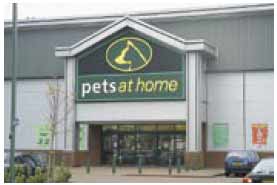
Location Policy
Pets at Home are located on out of town / edge of town retail warehouse sites. These sites tend to benefit form good access and free parking - a must when buying heavy bags of dog food. Typically PAH are next to other retail warehouse operators, such as electrical goods retailers, furniture outlets and motor accessories stores. They do like to be next to a supermarket if possible, because these attract a regular female visitor. Good visibility and easy access are very important determinants of location. PAH locate superstores in towns of about 50-75,000 population.
Commercial Concept
What PAH are really trying to create is the feeling of a small store with personal service, within a 1,000m2 superstore which offers supermarket convenience. They recognize that their customers can buy food elsewhere, so PAH seek to make their stores entertaining by offering livestock, specialist ranges for the hobbyist, and where possible they offer advice, PAH believe. PAH do have the opinion that the livestock features - the aviaries, the bunny village and the aquatic areas-, attract whole families who see the store as a "free day out". PAH have island checkouts, rather than supermarket style lane checkouts, and this they feel creates a friendly, personal impression. PAH always try to be guided by what is best for the pet, and they do not tell their people to make a sale at any price. PAH are very careful as to who they sell livestock to - they check both the age and the suitability of the customer before releasing pets to them. This approach means PAH have a responsible attitude to pet care, which is vital. In 30 of the 150 stores they operate veterinary surgeries and this gives the PAH offer great authority.
Product Range
In terms of livestock PAH offer small animals, some birds and coldwater and tropical fish. Their criteria with livestock is that the animals they offer should be easily cared for as family pets, and that the pets should be comfortable in a retail environment. PAH do not sell reptiles or marine fish and so they are not an exotic livestock store. In a few stores they sell some horse feed and wormers, but they admit they do not have great equestrian expertise.
PAH offers foods and accessories for dogs, cats, small animals, fish and garden birds. They are well known for their food ranges, which are broader and more specialized than those found in supermarkets and indeed many pet shops. With accessories PAH try to present interesting, value for money ranges. They have some own label products, principally small animal food and cat litters, and the own label strategy is being extended to dog and cat foods in 2004.
Product Presentation
PAH put a lot of effort into presenting product to best advantage. They always remember that what is quite normal to them may appear new and confusing to a first time customer. It is important to try to categorize product by animal type, and to use in store information to help the new customer. PAH have relatively short fixture runs, which helps to distinguish one category from another, but this also make merchandising more difficult. They have a team of merchandisers at the centre, who use planogram software to help achieve consistency across the stores. Many of their customers visit regularly, so PAH keep their stores interesting by presenting regular promotions in conjunction with their suppliers.
Client Loyalty Strategy
They have the old fashioned strategy of always trying to give customers the goods they want, at the right price. Like for like sales and average spend have increased in every year of the company's history, so this policy seems to be a good one. PAH have sophisticated EPOS systems, but they do not hold a customer database at store level. PAH have no plans to adopt a card based loyalty scheme, for example.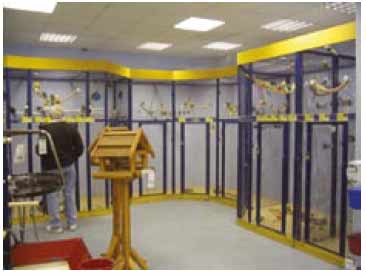
Category Management
Many of the categories are quite small, so their buyers tend to look after broad product areas such as all foods, or accessories and aquatics. PAH do not let suppliers manage categories for them, although they do work very closely with them, in particular with their import partners.
EDI (Electronic Data Interchange)
At present PAH use EDI in a limited way, but this year they will extend its use across all suppliers. The benefits of EDI are huge for both supplier and retailer, and modern EDI systems will integrate fully with their National Distribution Centre in Stoke on Trent to create even more efficiencies. The reduction in paperwork handling and checking of documents allied to the use of scanning technology all supports just in time inventory control which releases cash for investment.
 |
Supply Chain Management
Twelve months ago PAH invested in a new National Distribution Centre to support the stores. The centre has the benefit of a full warehouse management system, which gives real time control of each item in the depot. Put away and picking instructions reach the operatives via radio communications and extensive use is made of voice recognition technology. There is a mezzanine area of the depot where accessories are handled by an automated system and this is very efficient. The philosophy behind their supply to stores is that they only issue as many items as will fit on the retail shelf. Supplying large quantities results in double handling in stores which is very expensive and a big distraction away from customers. Most of their stores receive 3 deliveries a week from the PAH depot. They keep direct supply from the manufacturer into the store to an absolute minimum.
Increasingly PAH are working with their suppliers to optimize the utilization of their transport fleet and this year they will increase the amount of collections from manufacturers to access factory gate prices which are very advantageous. They are constantly working with suppliers to agree the right pack sizes for their business because at present too many aspects of packaging are not retailer or customer friendly.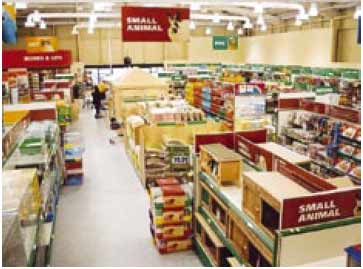
Trained Staff
PAH have over the years built up an impressive body of training materials which spans livestock care, shop routines, health and safety and so on. There is a pack for new starters, and then ongoing training is divided into 4 "Steps" which all staff are expected to study.
As the member of staff achieves the steps, there are pay increases. Much of the content of the training courses is of use in any area of retail - it is not limited to the study of animals. In order to comply with livestock licensing regulations, all of their stores have at least one formally qualified livestock carer.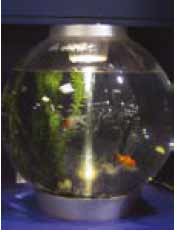
There are separate courses for store staff who want to pursue a career in management, as PAH always prefer to promote from within.
PAH recognize the importance of incentivising their store teams and they have a scheme in which store managers and the whole store team can earn bonuses if they hit certain targets. The scheme headings cover presentation, customer service (assessed by mystery shoppers) sales performance against target and even staff hours control. On occasion PAH choose a three month period, for example the run-up to Christmas, to be the base for a special incentive. Regional Development managers have the authority to award cash prizes for excellent performance; there is also a company suggestion scheme with cash and prizes to be won for good suggestions.
  |
Source: PETS International Magazine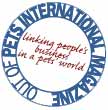
HOME - About PetsGlobal.com - Pet Industry Links - Update my company - Contact PetsGlobal.com
© 2001-2025 PetsGlobal.com All right reserved